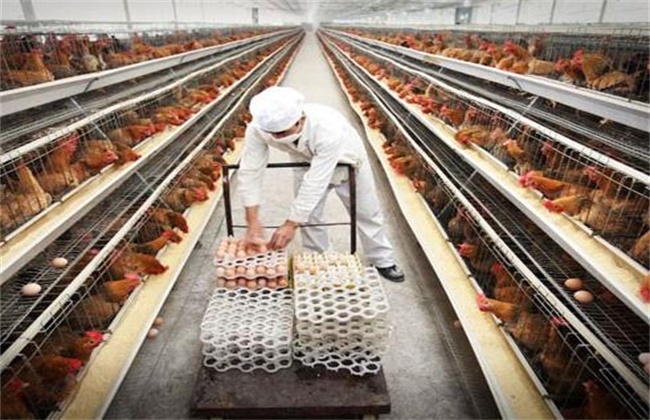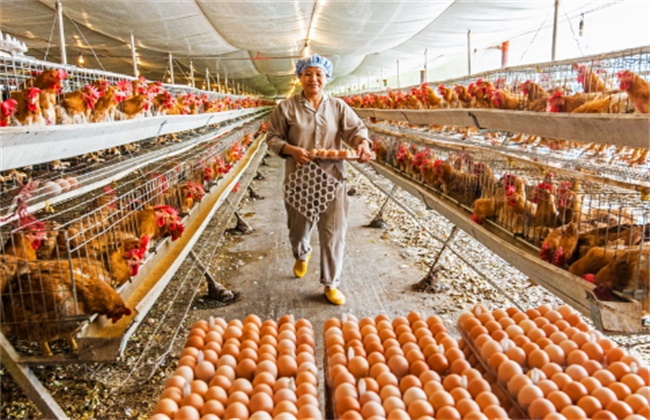Factors Affecting the Decline of Laying Rate of Laying Hens
The laying rate of laying hens is an important standard to measure the production level of laying hens, and the laying rate of laying hens is affected by many factors. if we want to increase the production rate, we must first find out the factors that affect the laying rate. So what are the factors affecting the laying rate of laying hens? Let's get to know it.

1. Physiological factors
The physiological factors affecting the laying rate of laying hens are mainly due to the levels of follicle-stimulating hormone and luteinizing hormone, the atresia of follicles, the coordination of fallopian tube and ovarian function, the level of free radicals and the occurrence of fatty liver syndrome. From the point of view of physiological changes, it can not only improve the laying rate, but also regulate the endocrine function of laying birds, which is closely related to the process of follicular development and maturation, ovulation and egg formation. The purpose of egg laying is to increase the secretion of reproductive hormones such as progesterone and reduce the fat content in the liver. so as to reduce the incidence of fatty liver.
2. Feed nutrition factors
Lack of nutrients or too high nutrients in feed for a long time, in addition, changes in feed nutrients or feeding moldy and rotten feed and other reasons may lead to the decline of egg production rate. Excessive water content, insufficient drinking water, lack of vitamins in feed and lack of salt when feeding corn can cause the decrease of laying rate of laying hens. Feed nutrition can not meet the selection of laying hens, which is very likely to produce malformed eggs with poor eggshell quality, resulting in the quality and hatching rate of breeder hens.
3. Factors of feeding and management
The laying performance of laying hens is affected by the living environment and management level, in which temperature, light and stress are the main factors. In the high temperature environment, the feed intake of laying hens is weakened, which can not meet their nutritional needs, which leads to the decrease of laying rate. The continuous low temperature will also lead to a decrease in the laying rate. In the environment of short light time and weak light intensity, the ovulation and egg laying of laying hens are less stimulated, while long light time and high light intensity will also affect the rest and continuous laying of laying hens, and it is easy to form feather pecking. Laying hens are extremely sensitive to the environment during the laying period, and a little carelessness will cause them to be frightened, resulting in a decrease in egg production, and an increase in the number of malformed eggs such as thin shell and soft shell.
4. Disease factors
Disease is also a factor leading to the decline of laying rate of laying hens. When the disease is serious, it will not only affect the laying rate, but also cause a large area of death. The diseases that cause the decline of egg production rate are mostly caused by viral and bacterial diseases, such as Newcastle disease, avian influenza, egg drop syndrome, infectious bronchitis, infectious laryngotracheitis, fowlpox, infectious encephalomyelitis and so on. The main bacterial diseases are salmonella, colibacillosis, Mycoplasma gallisepticum and so on. Most of these diseases are caused by untimely cleaning and disinfection of the chicken house, dirty air, poor ventilation and other reasons. Environmental management should be strengthened and corresponding vaccines should be vaccinated at the same time.
The above is the introduction of the factors affecting the decline of laying rate. I hope it can help you. If you want to know more about it, please follow us.
Related
- On the eggshell is a badge full of pride. British Poultry Egg Market and Consumer observation
- British study: 72% of Britons are willing to buy native eggs raised by insects
- Guidelines for friendly egg production revised the increase of space in chicken sheds can not be forced to change feathers and lay eggs.
- Risk of delay in customs clearance Australia suspends lobster exports to China
- Pig semen-the Vector of virus Transmission (4)
- Pig semen-the Vector of virus Transmission (3)
- Five common causes of difficult control of classical swine fever in clinic and their countermeasures
- Foot-and-mouth disease is the most effective way to prevent it!
- PED is the number one killer of piglets and has to be guarded against in autumn and winter.
- What is "yellow fat pig"? Have you ever heard the pig collector talk about "yellow fat pig"?



